Survival Plants:
Essential Survival Tools
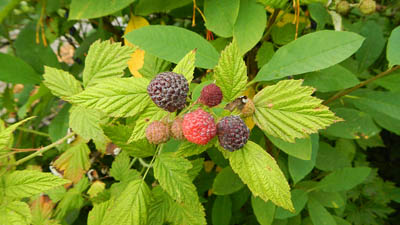
By Filip Tkaczyk
Survival plants are found everywhere! Getting to know your local plants can help spice up your lunch and literally save your life! Wild plants can fulfill a wide variety of survival needs including:
- Calories and nutrients to fuel your body
- Building material and insulation for shelters
- Wood for fire and an assortment of tools
- Medicines to help treat or even prevent illnesses
- Materials to make cordage
Survival Priorities
One way to look at survival plants and their uses is based on the four basic survival priorities. These are typically considered to be arranged in order of priority as follows: shelter, water, fire and finally food. Plants can be useful for taking care of many of the survival priorities. Also, different parts of the same plant during different seasons can be useful for different survival needs.
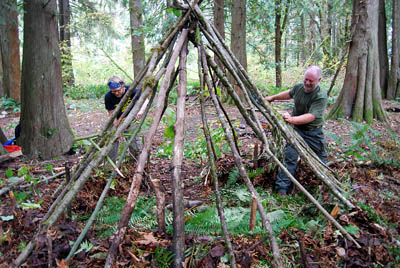
Survival Plants for Shelter and Insulation
Successful survival shelters typically need to include effective structures and insulating materials. Some of the best materials for shelters can be found in deciduous woodlands and forests. The fallen branches and leaves in these landscapes provide all the materials needed for a variety of simple shelters such as debris huts, lean-to shelters, and debris teepees. Forests that include an abundance of trees such as maples, oaks, beech, and other large-leaved deciduous trees are excellent places to seek out materials for survival shelters.
Coniferous forests and woodlands can also provide an abundance of shelter building materials. Conifers are effective survival plants because they often have abundant foliage, although most of them are evergreen and retain this foliage throughout the year. This means that typically it requires harvesting from live trees, rather than fallen leaves as with deciduous forests. Such harvesting will have a more significant, long-term impact on the landscape and so that kind of harvesting should only be done when the real need arises or when choosing a location where such an impact would be less significant due to a local abundance of those particular trees.
Generally, the branches or small dead trunks of almost any tree can be used for the main structural skeleton of a shelter. A variety of springy, leafy materials such as large ferns, grasses or any other plant material that traps air can be effective insulation. Effective insulation in colder climates made out of survival plants needs to be several feet thick (typically at least 3 feet thick). Insulation is vital both as bedding within the shelter, and as a covering on the outside.
Along wetland areas you can often find cattails (Typha ssp.) and bulrushes (Scirpus ssp.). Both of these plants commonly grow in abundance and have leaves or stems that have air chambers inside of them. They can be used in layered bundles to create a bed, and to cover the outside of a shelter.
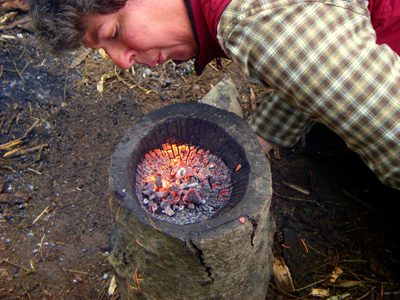
Plants for Water
Drinking and gathering water in a survival situation can be difficult and sometimes hazardous. Many sources of water in the backcountry are not safe to drink without purification. Transporting water can also be a challenge and some survival plants are effective as containers for carrying water. These "container" plants include:
- Japanese knotweed (Fallopia spp.) stems
- Bamboo stems
- Burned out stalks of agaves (Agave spp.)
- Hollowed or burned out containers made from rounds of any non-toxic tree. The burned out containers made of tree rounds can also be used as a container to boil water in so as to purify it.
Mosses are an effective sponge, and can be used to rapidly collect dew as a safe drinking source of water. Species of Oregon grape (Mahonia ssp.) can be used as an emergency antimicrobial taken along with a drink of water from a potentially questionable source. This powerful medicinal plant may help reduce the chances of contracting microbial, water-borne pathogens such as giardia or cryptosporidium.

Survival Plants for Fire
Survival plants useful for fire typically fill a specific role in the fire making process based on their uses. They could be used as part of a friction fire kit and/or tinder materials.
Tinder materials are any dry, fluffy materials that will hold a burning coal and can be blown into a flame. Good choices of tinder include a variety of completely dry materials such as: cattail fluff, fireweed or thistle seeds, dead bracken fern, dead grass, scraped cedar bark, inner bark from a dead cottonwood tree and many others.
Be More Prepared For Your Next Outdoor Adventure!
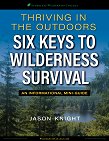
Don't leave without knowing these six essential survival skills. Our free survival mini guide reveals the strategies of:
- Shelter & fire to prevent the number one cause of death
- Obtaining clean water to avoid life-threatening dehydration
- Common wild survival foods and other critical skills!

Plants used for the spindles and hearth boards of a friction fire kit can vary somewhat. The best are shrubs and trees with soft or medium density wood. Some of the most commonly used in the Pacific Northwest are: western red cedar, black cottonwood roots, willow, red alder and seasoned western hemlock. In the southwestern US, other plants often used as effective spindles and hearth boards include the flowering stalks of yuccas (Yucca spp.), sotols (Dasylirion spp.), and agaves (Agaves spp.).
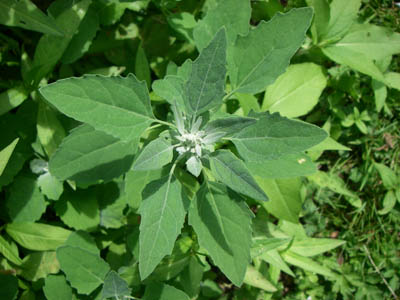
Survival Plants as Food
This is perhaps the first thing that many people think of when they consider using plants in a survival situation. Food is actually generally the lowest survival priority because most people can survive without food for about three weeks. This is also the most complex and time intensive aspect of learning about survival plants. To learn that a few plants are considered edible is relatively easy, but to learn when to harvest them, which parts are best, where they will be found and how best to prepare them to make them the most palatable can be an intensive process. This knowledge is, however, accessible to anyone who can invest their time in studying and getting to know the plants around them. It is much more effective from a survival stand-point to be very comfortable with finding, harvesting and safely consuming some plants, rather than having a very long list of plants you know are considered edible but that you have never even tried to eat.
Survival knowledge must be practical knowledge, based on field experience rather than only on memorization or intellectual achievement. One simple way to become more familiar with edibles it to include them as a regular part of your diet and to harvest them yourself.
One of the first layers of knowledge to gain regarding learning more about survival plants as food is understanding how they are used at different times of year. Each plant has its own specific times and specific conditions during the year when they first sprout, put on leaves, flower and then go to seed. In regions with four distinct seasons, many of the plants start this process in spring, and end their cycle in late summer or fall. Understanding local seasonal events can help you be more successful at finding the plants you need at the right stages, and be a more effective survivor.
Wild plants generally provide food in one of five different forms: greens, flowers, seeds, fruits and roots. Edible greens are typically in the form of leaves or stems. Many are best sought out in springtime in locations that have four distinct seasons. In areas with milder climates, some wild greens might be available almost any time of year. In drier climates, look for areas near water for edible greens or seek them after significant rain. Commonly used edible wild greens include species such as:
- lamb's quarter's (Chenopodium album)
- amaranth (Amaranthus ssp.)
- dandelion (Taraxacum officinale)
- chickweed (Stellaria media)
- chicory (Cichorium intybus)
- garlic mustard (Alliaria petiolata)
- hairy cat's ear (Hypochaeris radicata)
- purslane (Portulaca oleracea)
Edible flowers can sometimes be abundant, and are worth adding to a meal as a source of nutrients and to diversify the taste of your wild meals. Flowers are low in caloric content, but can help make a bland salad of greens more enjoyable. Common edible flowers include:
- violets (Viola spp.)
- dandelion (Taraxacum officinale)
- yucca (Yucca spp.)
- roses (Rosa spp.)
- raspberry and blackberry flowers (Rubus spp.)
Seeds are often small, but when found in abundance can be worth pursuing because of the abundance of fats and nutrients they contain. There are many edible seeds out there including:
- grass seeds
- sedge seeds (Carex spp.)
- acorns (Quercus and Notholithocarpus spp.)
- hickory nuts (Carya spp.)
- hazelnuts (Corylus spp.)
- walnuts (Juglans spp.)
Edible fruits are also a good source of wild food when found in abundance. Fruits are generally low to moderate in caloric content, but often contain sugars which are a great source of short term fuel for survival situations. Some of the best edible fruits to seek in a survival situation include:
- plums and cherries (Prunus spp.)
- serviceberries (Amelanchier psp.)
- blue berries and huckleberries (Vaccinium spp.)
- blackberries and raspberries (Rubus spp.)
- blue or black elderberries (Sambucus spp.)
- wild strawberries (Fragaria spp.)
- prickly pear fruit (Opuntia spp.)
- hackberries (Celtis spp.)
- wild currants (Ribes spp.)
- salal (Gaultheria spp.)
- crabapples (Malus spp.)
- passion fruits (Passiflora spp.)
Lastly, edible roots can be a good thing to look to in a survival situation. Some survival plants have edible roots that are available even in the dead of winter under ice and snow. One of these is the cattail, which has an edible part almost any time of the year. Other reliable edible roots to seek out are:
- dandelion (Taraxacum officinale)
- burdock (Arctium lappa)
- lomatiums (Lomatium spp.)
- wild onions (Allium spp.)
- camas (Camassia spp.)
Roots are typically a good source of starches and have more caloric content than other parts of the plants.
Survival Through Naturalist Knowledge
Survival is dependent on an ever-growing knowledge of the land and especially on the plants that grow there and the resources they can provide. Studying the ecology and botany of a place is a part of the greater study that falls under the umbrella of naturalist skills. The best wilderness survival practitioners are those that are also good naturalists. Remember to get intimately familiar with the plants you hope to depend on in a survival situation. Learn to find, harvest and regularly use survival plants in every season.
Equipped with this knowledge, you will be more prepared to survive the unexpected and you will enrich your life with a healthier and more diverse diet.
Enjoy getting to know the wild growing things!
By the way, if you enjoyed this article then you'll love our survival mini guide. You'll discover six key strategies to staying alive in the outdoors plus often-overlooked survival tips. We're currently giving away free copies here.
Resources:
For more information Check out this article from Discovery News
Learn about our Wilderness Survival Courses.
Learn about our Wild Edible & Medicinal Plants Courses.

About the Author: Filip Tkaczyk is a periodic guest teacher at Alderleaf. He also wrote the field guide Tracks & Sign of Reptiles & Amphibians. Learn more about Filip Tkaczyk.
Return from Survival Plants back to Wilderness Survival Articles
Is The Essential Wilderness Survival Skills Course Right for You? Take the "Online Survival Training Readiness" Quiz
See for yourself if this eye-opening course is a good fit for you. It takes just a few minutes! Get your Survival Training Readiness Score Now!

Grow Your Outdoor Skills! Get monthly updates on new wilderness skills, upcoming courses, and special opportunities. Join the free Alderleaf eNews and as a welcome gift you'll get a copy of our Mini Survival Guide.

 The Six Keys to Survival: Get a free copy of our survival mini-guide and monthly tips!
The Six Keys to Survival: Get a free copy of our survival mini-guide and monthly tips!
Learn more